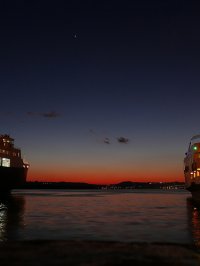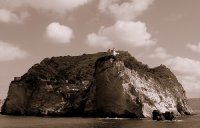Delve into Pozzuoli in Italy
Pozzuoli in the region of Campania with its 78,754 residents is a city in Italy - some 112 mi or ( 180 km ) South-East of Rome , the country's capital .
Current time in Pozzuoli is now 06:36 PM (Thursday) . The local timezone is named " Europe/Rome " with a UTC offset of 1 hours. Depending on your travel modalities, these larger destinations might be interesting for you: Palermo, Villaricca, Trentola-Ducenta, Soccavo, and Sant'Arpino. While being here, make sure to check out Palermo . We encountered some video on the web . Scroll down to see the most favourite one or select the video collection in the navigation. Are you curious about the possible sightseeing spots and facts in Pozzuoli ? We have collected some references on our attractions page.
Videos
the underwater city
le rovine romane di Baia the roman ruins of Baia ..
Napoli - Naples City of the Damned PART 3
PART 3 of the Documentary charting Naples 1943-48, the suffering of the population and the re-emergence of the Camorra. No other city in Italy suffered so badly as Napoli. Allied bombing killed 20000 ..
CUMANA BAGNOLI
PERCORSO IN CUMANA CON DANSON METROPOLI DI PAOLO CONTE ..
VINCENZO SALEMME e il RISTORANTE DA GIONA a MISENO BACOLI.
il RISTORANTE DA GIONA a MISENO BACOLI.Via Dragonara, 6 80070 Bacoli Napoli 081 5234659 MIXITALIA ..
Videos provided by Youtube are under the copyright of their owners.
Interesting facts about this location
Portus Julius
Portus Julius (alternatively spelled in the Latin "Iulius") was the first harbor specifically constructed to be a base for the Roman western naval fleet, the classis Misenensis. (The eastern fleet was in the Port of Ravenna. ) The port was on a peninsula located at the northern end of the gulf of Naples, and incorporated two bodies of fresh water: Lake Lucrino, Lake Averno, and the natural inner and outer harbor behind Cape Misenum.
Located at 40.83 14.09 (Lat./Long.); Less than 1 km away
Lucrinus Lacus
Lucrinus Lacus, or Lucrine Lake is a lake of Campania, southern Italy, less than one kilometre to the south of Lake Avernus. The lake is separated from the sea by a narrow strip of land that is traversed by the coast road, the Via Herculanea, and by a modern railway. The road runs on an embankment, the construction of which was traditionally attributed to Heracles in Strabo's time.
Located at 40.83 14.08 (Lat./Long.); Less than 2 km away
Phlegraean Fields
The Phlegraean Fields, also known as Campi Flegrei, (from Greek φλέγος, burning), is a large 13 kilometres wide caldera situated to the west of Naples, Italy. It was declared a regional park in 2003. Lying mostly underwater, the area comprises 24 craters and volcanic edifices. Hydrothermal activity can be observed at Lucrino, Agnano and the town of Pozzuoli.
Located at 40.83 14.14 (Lat./Long.); Less than 3 km away
Lake Avernus
Lake Avernus (or Lago d'Averno in Italian) is a volcanic crater lake located in the Avernus crater in the Campania region of southern Italy, around 4 km northwest of Pozzuoli. It is near the volcanic field known as the Campi Flegrei and comprises part of the wider Campanian volcanic arc. The lake is roughly circular, measuring 2 km in circumference and 60 m (213 ft) deep. Avernus was of major importance to the Romans, who considered it to be the entrance to Hades.
Located at 40.84 14.07 (Lat./Long.); Less than 3 km away
Solfatara (volcano)
Solfatara is a shallow volcanic crater at Pozzuoli, near Naples, part of the Campi Flegrei volcanic area. It is a dormant volcano, which still emits jets of steam with sulfurous fumes. The name comes from the Latin, Sulpha terra, "land of sulfur", or "sulfur earth". It was formed around 4000 years ago and last erupted in 1198 with what was probably a phreatic eruption - an explosive steam-driven eruption caused when groundwater interacts with magma.
Located at 40.83 14.15 (Lat./Long.); Less than 3 km away
Pictures
Historical Weather
Related Locations
Information of geographic nature is based on public data provided by geonames.org, CIA world facts book, Unesco, DBpedia and wikipedia. Weather is based on NOAA GFS.



